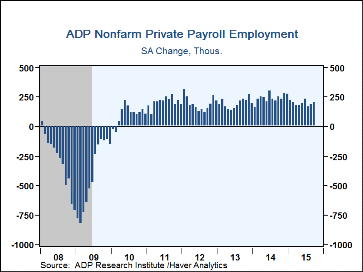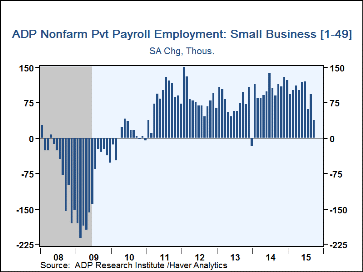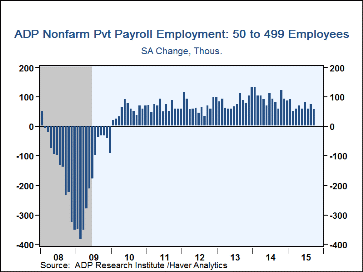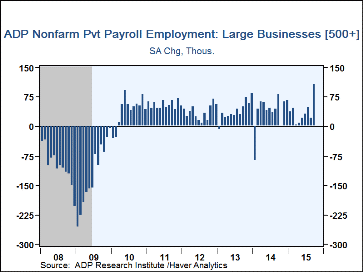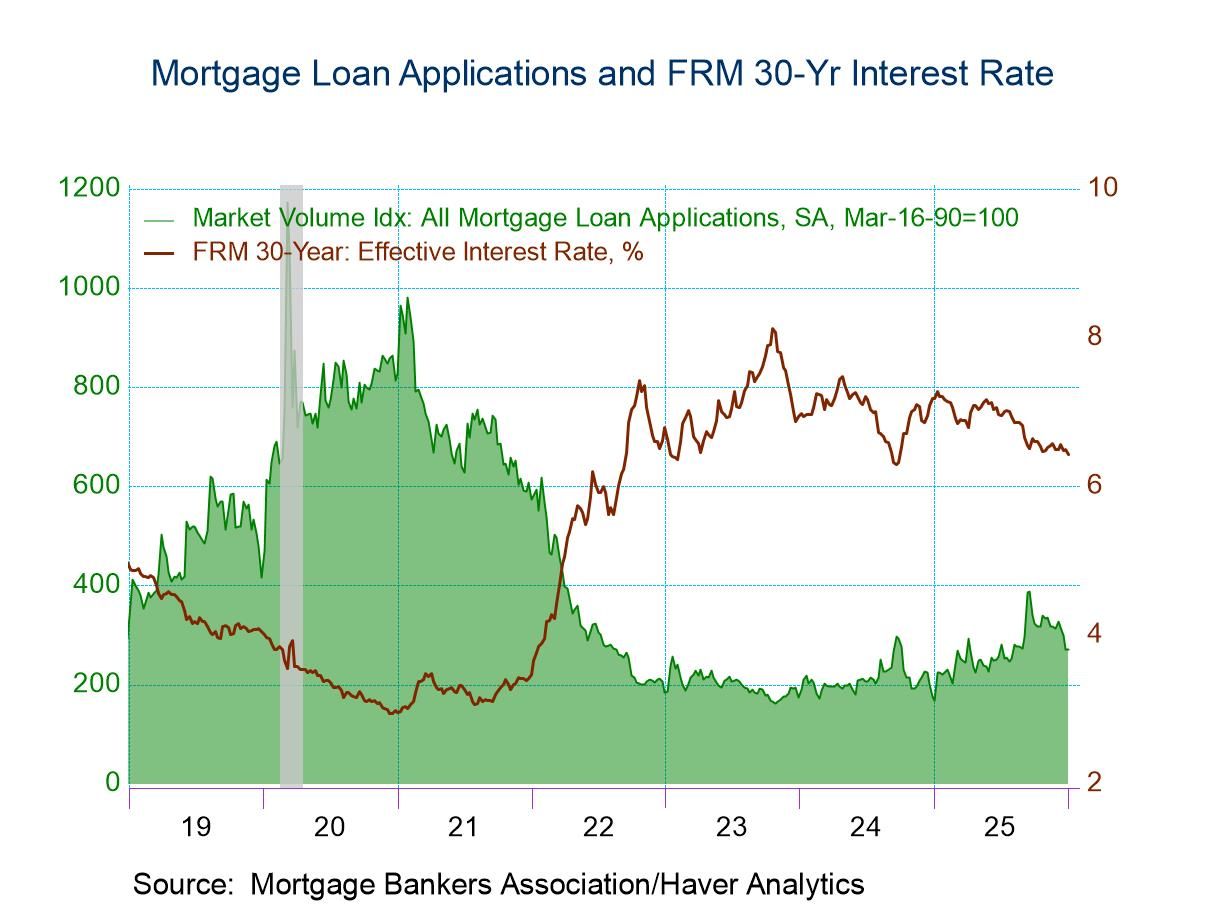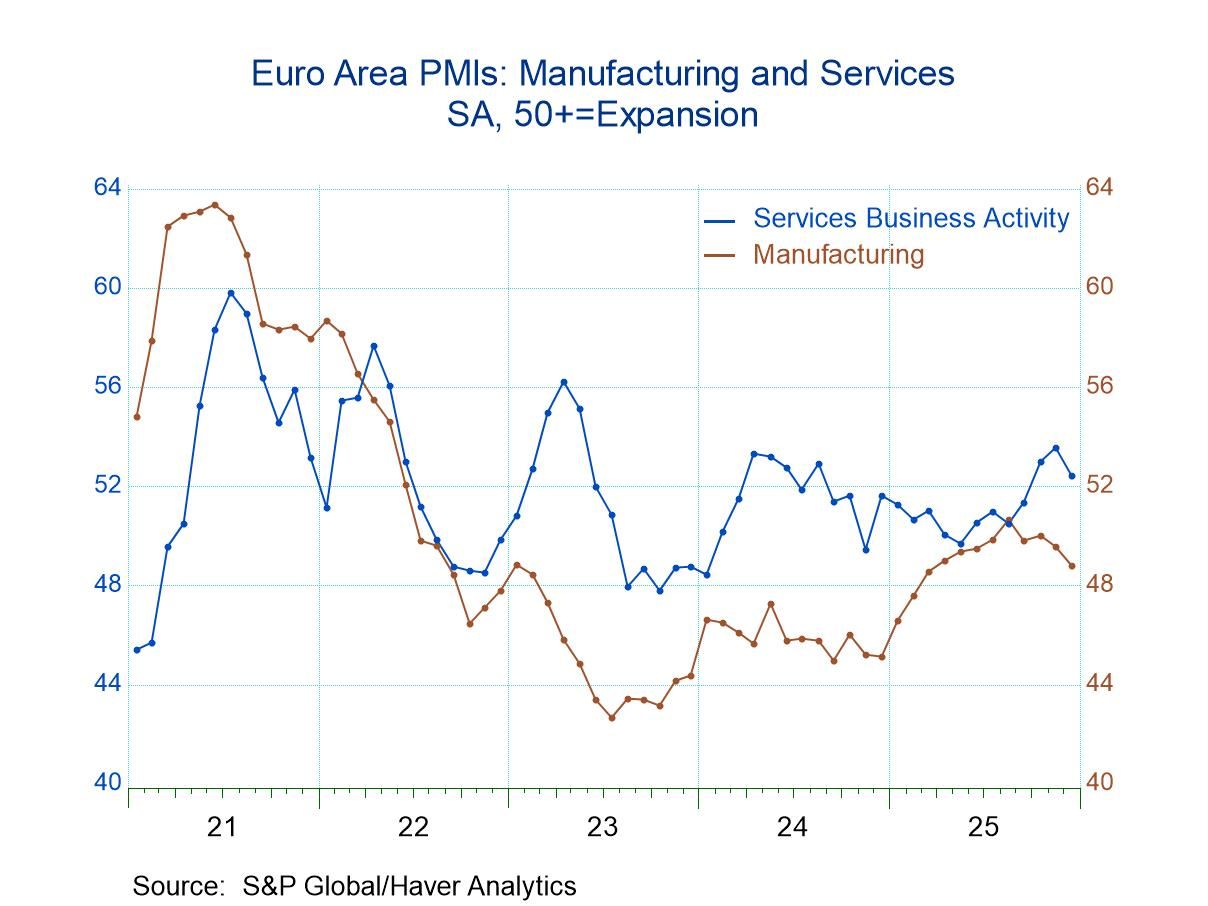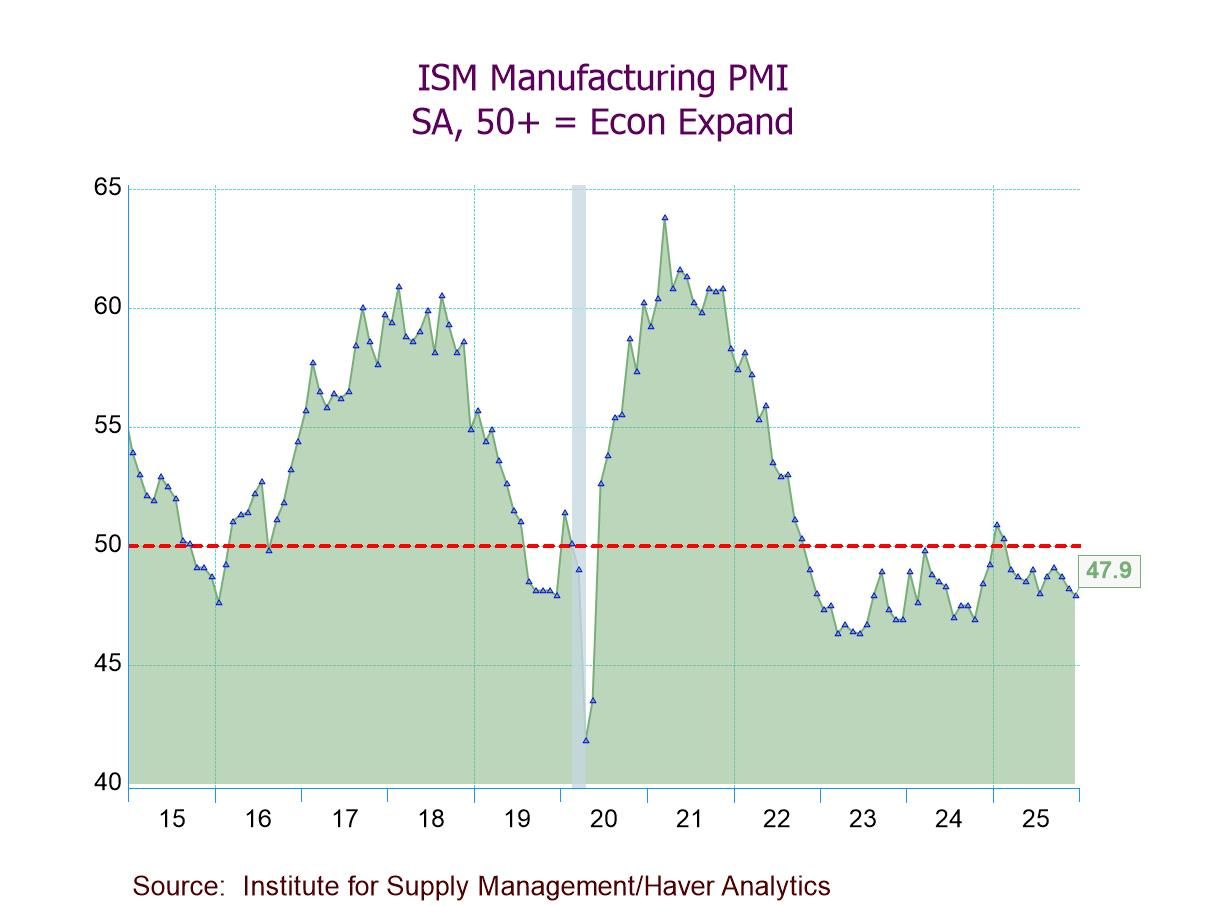 Global| Sep 30 2015
Global| Sep 30 2015U.S. ADP Payroll Increase Sustains Growth
Summary
The ADP/Moody's National Employment Report shows a nonfarm private sector payroll gain of 200,000 in September, after August's 186,000; August was revised minimally from 190,000 reported before. The September figure was slightly more [...]
The ADP/Moody's National Employment Report shows a nonfarm private sector payroll gain of 200,000 in September, after August's 186,000; August was revised minimally from 190,000 reported before. The September figure was slightly more than consensus expectations for a 192,000 in the Action Economics Forecast Survey. During the last ten years, there has been a 97% correlation between the change in the ADP figure and the change in nonfarm private sector payrolls as measured by the Bureau of Labor Statistics.
The ADP survey is based on ADP's business payroll transaction system covering 411,000 companies and nearly 24 million employees. The data are processed by Moody's Analytics Inc., then calibrated and aligned with the BLS establishment survey data. The ADP data cover private sector employment, not government.
Small-business (1-49 employees) payroll growth slowed to 37,000 in September from 92,000 in August (2.4% y/y); the last three months show a moderating trend from the 100,000+ gains earlier in the year. Medium-sized businesses (50-499 employees) rose 56,000 in September (2.1% y/y), somewhat less than August's 74,000. Large companies (500 or more employees) surged by 106,000, a record for this 10-year-old series, but prior sluggishness kept the year-on-year growth to 1.7%.
Employment gains in the goods-producing sector slowed to 12,000 in September (1.4% y/y), following 15,000 in August and just 2,000 in July. The increase was mixed by industry, with construction gaining 35,000 (4.8% y/y), even as manufacturing lost 15,000 jobs (0.4% y/y). Jobs in the service sector increased 188,000 (2.3% y/y), slightly firmer than August's 172,000 and July's 167,000. The service sector gain was spread across major industries, with trade, transportation and utilities up 39,000 (1.9% y/y), professional and business services up 29,000 (2.5% y/y) and financial sector jobs increasing 15,000 (1.9% y/y).
The ADP National Employment Report data are maintained in Haver's USECON database; historical figures date back to April 2001 for the total and industry breakdown and back to January 2005 for the business size breakout. The expectation figure is available in Haver's AS1REPNA database.
| ADP/Moody's National Employment Report | Sep | Aug | Jul | Sep Y/Y | 2014 | 2013 | 2012 |
|---|---|---|---|---|---|---|---|
| Nonfarm Private Payroll Employment (m/m chg, 000s) | 200 | 186 | 169 | 2.2% | 2.3% | 1.9% | 2.3% |
| Small Payroll (1-49) | 37 | 92 | 61 | 2.4 | 2.1 | 1.9 | 2.5 |
| Medium Payroll (50-499) | 56 | 74 | 60 | 2.1 | 2.8 | 2.2 | 2.1 |
| Large Payroll (>500) | 106 | 21 | 48 | 1.7 | 1.8 | 1.6 | 2.1 |
| Goods-Producing | 12 | 15 | 2 | 1.4 | 2.3 | 1.7 | 2.2 |
| Construction | 35 | 18 | 15 | 4.8 | 4.6 | 3.5 | 2.5 |
| Manufacturing | -15 | 4 | -4 | 0.4 | 1.2 | 0.9 | 1.6 |
| Service-Producing | 188 | 172 | 167 | 2.3 | 2.3 | 2.0 | 2.3 |
Carol Stone, CBE
AuthorMore in Author Profile »Carol Stone, CBE came to Haver Analytics in 2003 following more than 35 years as a financial market economist at major Wall Street financial institutions, most especially Merrill Lynch and Nomura Securities. She had broad experience in analysis and forecasting of flow-of-funds accounts, the federal budget and Federal Reserve operations. At Nomura Securities, among other duties, she developed various indicator forecasting tools and edited a daily global publication produced in London and New York for readers in Tokyo. At Haver Analytics, Carol was a member of the Research Department, aiding database managers with research and documentation efforts, as well as posting commentary on select economic reports. In addition, she conducted Ways-of-the-World, a blog on economic issues for an Episcopal-Church-affiliated website, The Geranium Farm. During her career, Carol served as an officer of the Money Marketeers and the Downtown Economists Club. She had a PhD from NYU's Stern School of Business. She lived in Brooklyn, New York, and had a weekend home on Long Island.


